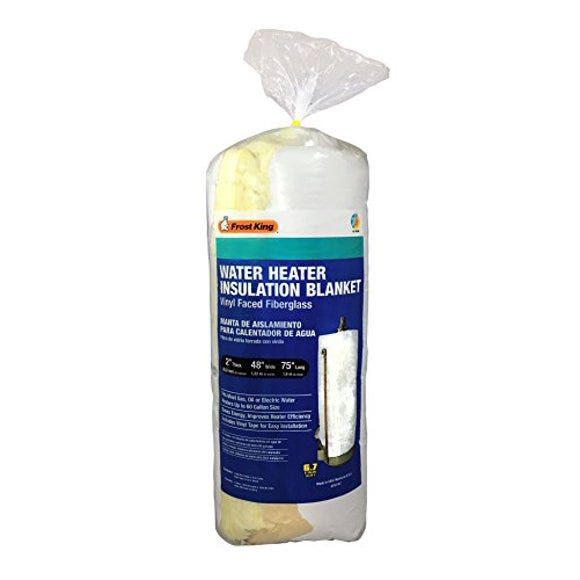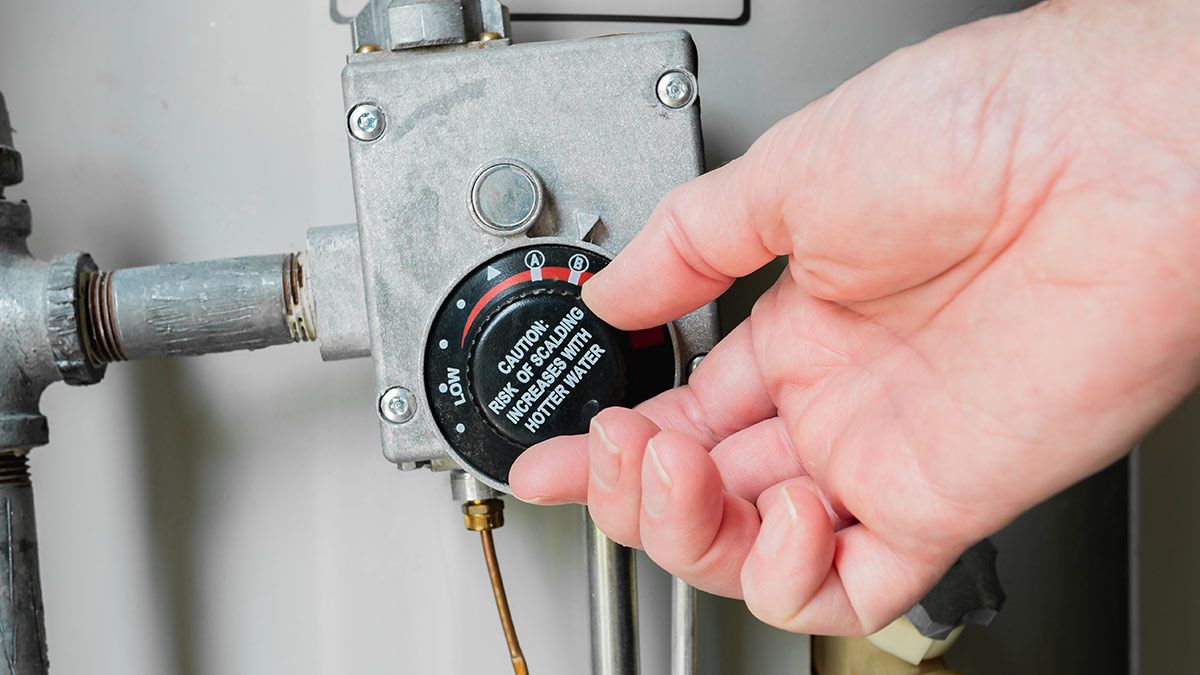Quick Links
Key Takeaways
To avoid illness, you should set your water heater thermostat at a minimum of 120°F. To avoid increased scalding risk, you should set it below 140°F.
It's tempting to set your water heater temperature back to save money, but before you do that, read this to ensure you're getting optimum comfort and savings without risking your health.
Why Does Water Heater Temperature Matter?
Other than wishing the hot water lasted longer during a shower or dealing with the hassle of replacing a failed water heater, most people don't think much about their water heaters---let alone the specifics of the temperature settings.
There are quite a few good reasons to care about the temperature of your water heater, though. And these reasons apply to both traditional tank-based water heaters and tankless water heaters. Not sure which one you have? Tank-based water heaters have a cylindrical holding tank that sits on the floor. Tankless water heaters are typically wall-mounted, and there is no holding tank as the water is heated on demand.
So why should you care about the temperature of your water heater? First and foremost, there's safety. If your water heater is set too hot, there is an increased risk of scalding. That risk applies regardless of the kind of water heater you have.
And if your water heater is set too low, there's a risk of microorganisms proliferating in the water. Although tankless water heaters have a significantly decreased risk of this because there is no water tank for the organisms to colonize, the risk still isn't zero.
Those microorganisms can make you very sick, especially when they become aerosolized while you're taking a shower and you breathe them right into your lungs. The bacteria in the Legionella family are the best-known example of this, and breathing them in causes an atypical form of pneumonia called Legionnaire's Disease.
In addition to safety concerns, there is also the matter of saving money. Turning your water heater up higher than you need just wastes money keeping the water hot when you're either not going to use it or end up mixing it with more cold water to cool it off.
Here's the Safe Temperature Range for Your Water Heater
There are a few factors to consider when setting the thermostat on your water heater. Let's look at the different temperature ranges and when you may wish to use them.
The absolute lowest you should set your water heater is 120°F. This is because Legionella bacteria thrive at 77°F-113°F. It's worth noting that 120°F is not hot enough to kill Legionella bacteria. It merely stops the growth so that any bacteria that may have come in with the freshwater supply won't multiply to dangerous levels.
You may wish to set your water heater above 120°F if you like really hot baths or showers, want longer showers (mixing hotter water with the incoming cold water can extend your shower), or if your appliances don't have built-in heaters.
Many dishwashers and washing machines have an electric heating element that boosts the temperature of the water at the appliance itself. If your appliances, especially the dishwasher, lack this feature, you may wish to compensate by turning up your water heater. This applies whether you have a traditional or tankless system, as the appliance needs hot water one way or the other.
Even if you don't need the water hotter for your appliances, you might consider turning it up higher if you have a traditional water heater that will hold tens of gallons of water at a time. At 130°F, Legionella bacteria die in around 6 hours. At 140°F, Legionella bacteria die in within 30 minutes.
Water at and above 140°F poses an increased scalding risk, especially for children and elderly people (who may be less sensitive to temperature variations and lack the grip strength or dexterity to shut off the water quickly if the temperature is too hot).
How big of a risk is scalding at higher temperatures? It takes minutes of exposure for 120°F to scald, but only seconds of exposure for 140°F to scald, so it's wise to adjust your water heater based on the age of your home's occupants.
Do note that while scalding is still an issue with tankless water heaters, bacterial contamination isn't. Because tankless water heaters don't hold large volumes of water for extended periods of time, you don't have to worry about your tankless water heater turning into a Legionella colony.
Extra Water Heater Safety and Saving Tips
In addition to setting the temperature of the water heater back (within reason) to save a little on your energy bill, there are a few things you can do to save money and increase the safety of your water heater.
Flush Your Water Heater
It's wise to routinely flush your water heater. Not only does this flush sediment and hard water buildup from the bottom of the water tank, thus increasing the efficiency of your water heater and extending the life of the components, but it also makes the water safer.
The crud at the bottom of your water heater is a perfect place for bacteria to grow, and flushing it out means an overall safer water heater.
You don't need to flush tankless water heaters the same way you flush a traditional water heater, but they do have a maintenance routine that includes a yearly flush with a mild acid (like vinegar or a manufacturer-specified cleaner) to remove the hard water scale.
Wrap Your Water Heater Tank
If you put your hand on the outside of your water heater's tank and the tank feels warm to the touch, it's losing heat energy to the environment.
You want the energy going to heat the water, not the utility room the heater is in, so if your heater tank is very warm to the touch, it might be worth picking up a water heater insulation blanket. They typically cost about $30-50 and do exactly as the name implies: it's a big insulation blanket you wrap around the body of the water heater to help it retain heat.

Frost King Water Heater Insulation Blanket
This blanket has an R10 insulation and keeps the heat in your water heater where it belongs.
You can find them in fiberglass and non-fiberglass forms. The fiberglass ones offer better insulation but the radiant-foil non-fiberglass ones are easier to handle with no risk of skin irritation or loose fibers.
Insulate Your Pipes
If your water heater is located in your basement or crawl space and there is a substantial run of exposed piping before the pipes enter the walls, then it's worth insulating your pipes.
Closed-cell foam pipe insulation is inexpensive and easy to install. It comes in tube form with a slit down the side, so you just pop it over the existing pipes and use a bit of foil tape down the seam to secure it.
While you can buy pipe insulation online, purchasing it at a local hardware store is much cheaper. It usually comes in 3-6 foot lengths, and for 1/2" diameter residential plumbing, you'll spend about 35 cents a foot.

